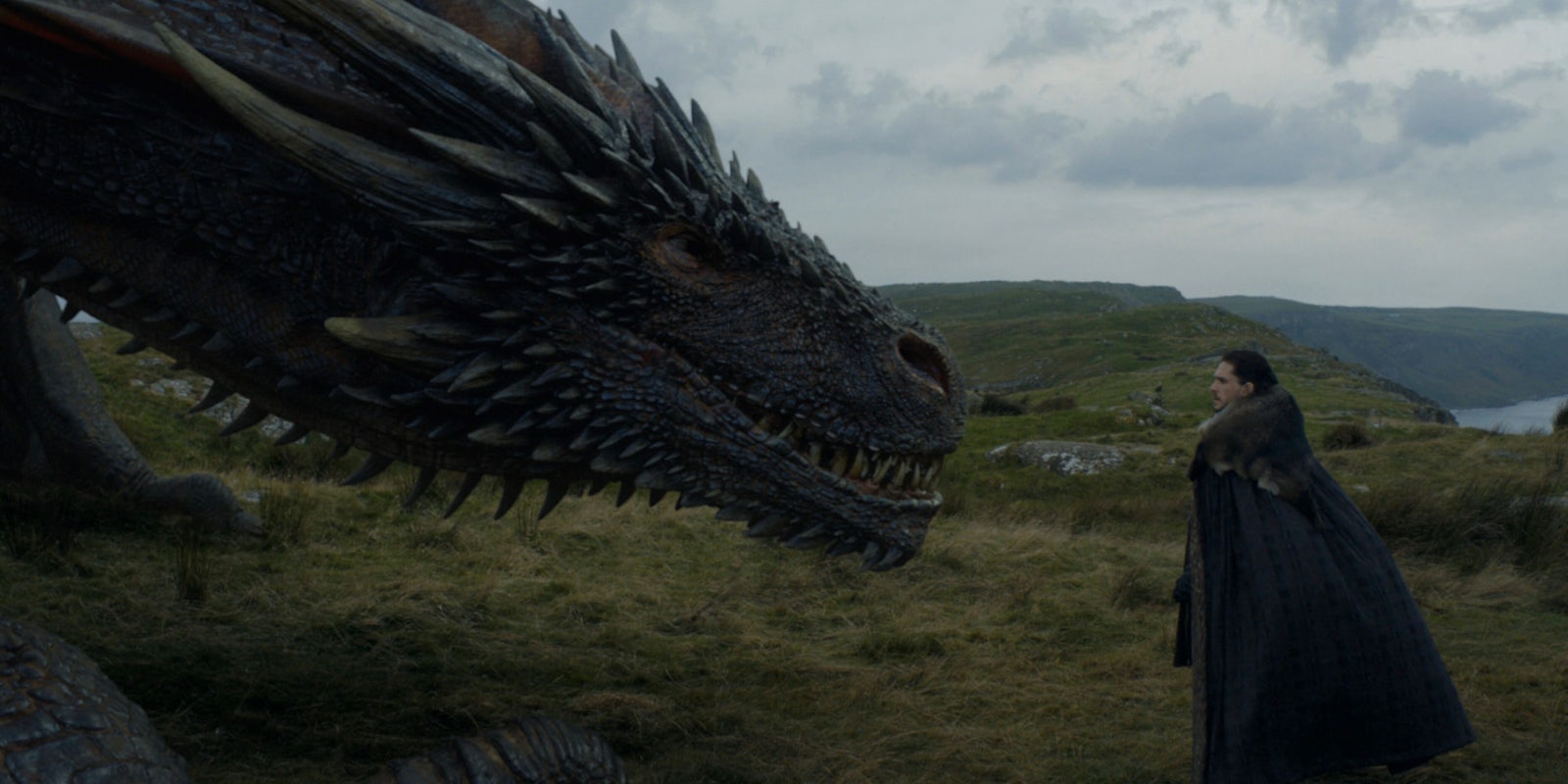Warning: This article contains spoilers for the latest Game of Thrones episode, “Eastwatch.”
For nearly all of Game of Thrones’ seven seasons, we’ve operated under a couple of concrete facts about two of our main characters. One, that Jon Snow is a bastard. And two, Daenerys Targaryen is the rightful heir to the Iron Throne. (Assuming you believe Robert Baratheon is the usurper in this situation, that is.) By the end of “Eastwatch,” those two constants are out the window.
In one of the episode’s quieter—but most important—scenes, Gilly is reading some of the scrolls that Archmaester Ebrose tasked Samwell Tarly with copying. She’s fascinated by what she’s reading, so every time she learns something new, she shares it with Sam. He grows increasing annoyed by it, so by the time Gilly stumbled onto something about a “Prince Ragger,” he’d had enough and gave the book to Baby Sam.
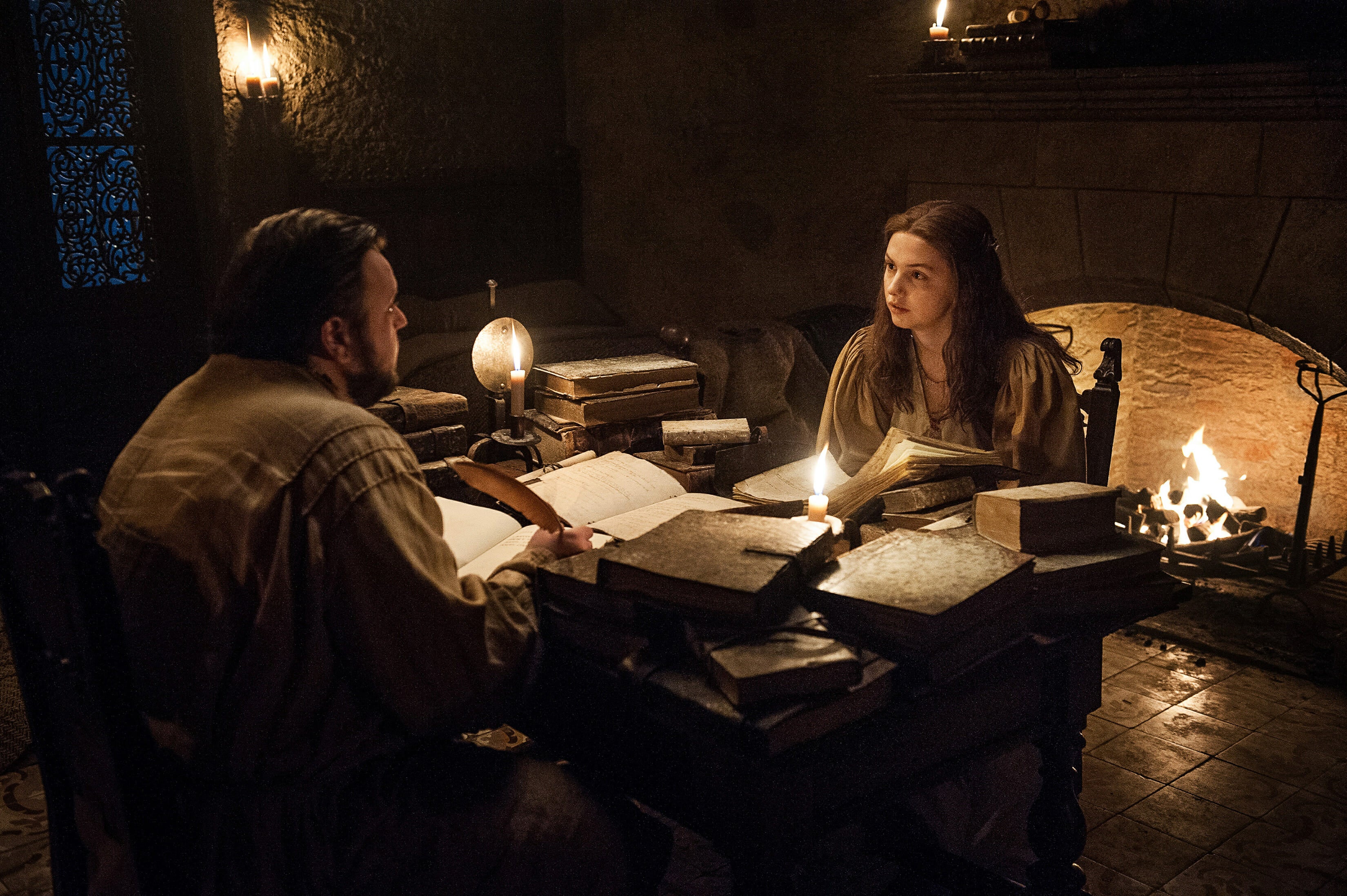
Gilly learned how to read from Shireen Baratheon back in season 5, but she might not have gotten far enough to learn how to pronounce Valyrian-style names. Yet fans knew exactly who Gilly was talking about. Through Gilly, Game of Thrones just casually dropped one of the show’s biggest reveals yet: Rhaegar Targaryen annulled his first marriage to Elia Martell to secretly marry another woman. That woman was Lyanna Stark—Jon Snow’s mother—which answers one of the questions fans have been debating for years.
Gilly doesn’t say who Rhaegar married—and Sam is, for now, uninterested—but fans have the clearest look at the puzzle yet. Rhaegar was dead for some time before Jon’s birth, killed at the Trident by Robert Baratheon’s hammer, but he’s still the trueborn son of Rhaegar and Lyanna.
That means once the war between the living and the dead is all said and done, the person with the best claim to the Iron Throne is not Daenerys, but rather Jon Snow.
The messy inheritance of the Targaryen dynasty
Like anything with the Targaryens, the family’s centuries-long history of incest makes things… complicated. With brothers and sisters, uncles and nieces, and aunts and nephews all marrying one another for generations, it’s hard for even diehard fans to follow. (One artist’s illustration of the Targaryen family tree does a great job of breaking it down if you’re interested.) It’s caused strife within families, multiple civil wars, and was even used to justify Robert’s Rebellion.
The issue first came up after Maegor I Targaryen (the son of Aegon the Conqueror and his sister Visenya) took the throne after the death of his older half-brother Aenys I Targaryen (the son of Aegon the Conqueror and his younger sister Rhaenys Targaryen). The throne should’ve gone to Aenys’ son Aegon, who attempted to take it back, but died during the Faith Militant uprising, which happened as a result of his marriage to his older sister Rhaena. Maegor died without any children, so the throne went to the Aegon and Viserys’ younger brother, Jaehaerys I Targaryen (instead of Maegor’s named heir, his wife—and Aegon and Rhaena’s daughter—Aenea Targaryen).
The Great Council, and why there’s never been a ruling Targaryen queen
We’ve seen plenty of kings over the 300 years since Aegon’s Conquest, but it wasn’t until Cersei Lannister sat upon the Iron Throne (following her coup d’etat against the Faith) that the Seven Kingdoms finally got a ruling queen.
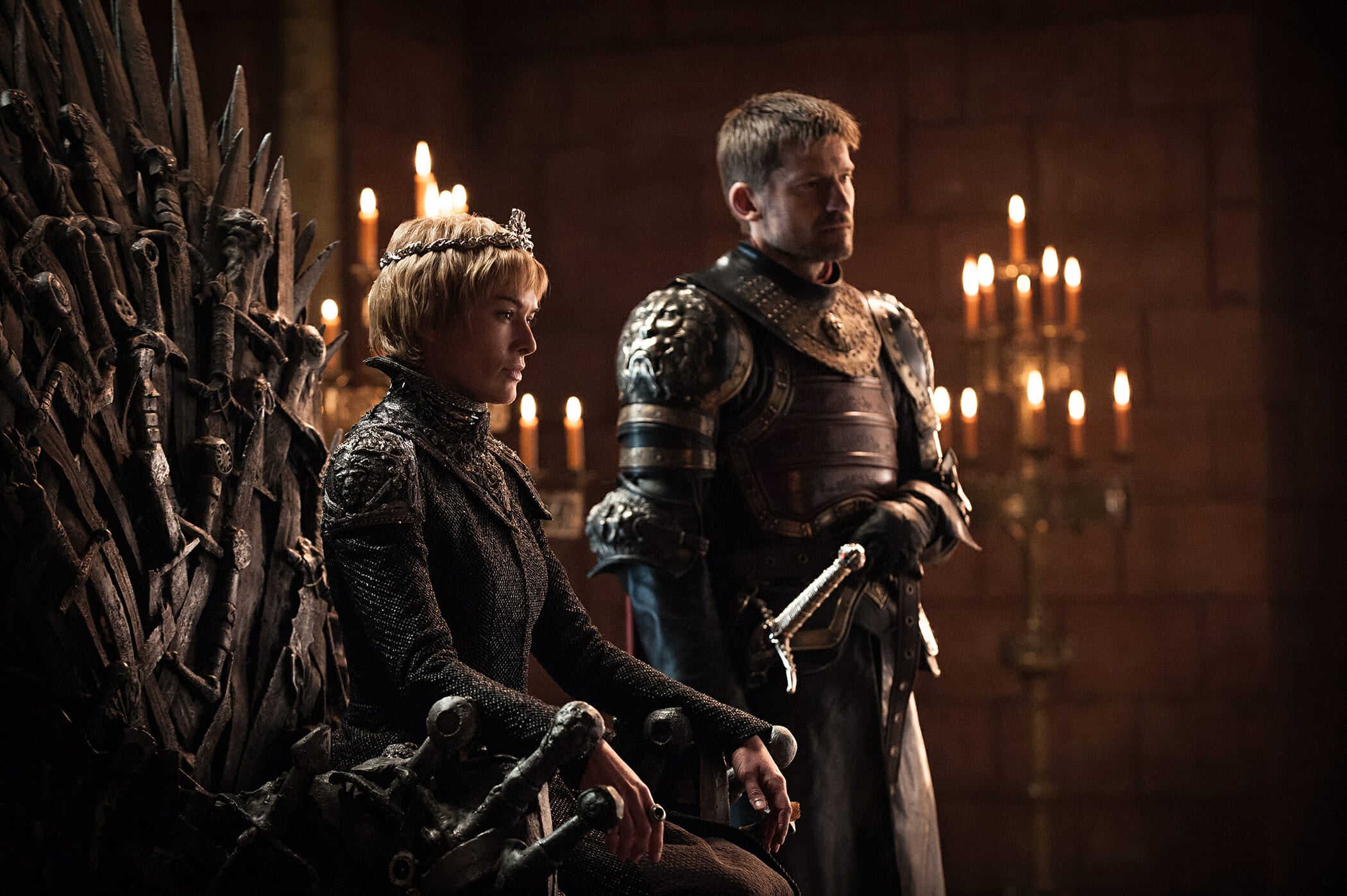
The reasoning behind Westeros’ lack of ruling Targaryen queens up until then wasn’t just because there were always male heirs in line. Sometimes a woman had the better claim, but for one reason or another, the throne always went to a man. And there’s a very big reason for that.
In Westeros, they have what’s called Great Council that can be called whenever it’s not clear who will inherit the throne. Not only will the Great Council choose the monarch, it often sets precedent. The first Great Council in 101 AC (After the Conquest), determined that a woman could not inherit the Iron Throne—or even her male children—after Viserys I Targaryen (son of Baelon) ascended to the throne over Laenor Velaryon (son of Rhaenys—a different one than Aegon’s sister-wife).
Precedents, of course, can be ignored. Viserys I named his daughter Rhaenyra (with his first wife) as his heir over his sons (with his second wife). But after he died, his son Aegon II Targaryen quickly took the throne instead. The move led to the deadly Dance of the Dragons, resulting in both their deaths, the extinction of dragons, and according to George R.R. Martin, the precedent that women could only sit on the Iron Throne “after all men in the Targaryen succession.”
The Blackfyre Rebellions, which started after Aegon IV legitimized all of his bastard children on his deathbed, caused even more headaches and wars for the throne. But the Great Council can also pass over higher ranking heirs to select a more stable ruler. The Great Council of 233 AC offered the throne to Aemon Targaryen (Maester Aemon on Game of Thrones), even though he had joined the Night’s Watch, because the council distrusted his younger brother Aegon. Aemon turned down the throne, and after passing over a girl Targaryen, an infant boy, and a Blackfyre, Aegon V Targaryen was crowned.
Even Robert Baratheon, who overthrew the Mad King Aerys II Targaryen more than 150 years after the Dance, used his Targaryen blood to legitimize his claim. (His grandmother, Rhaelle Targaryen, was one of Aegon V’s children.)
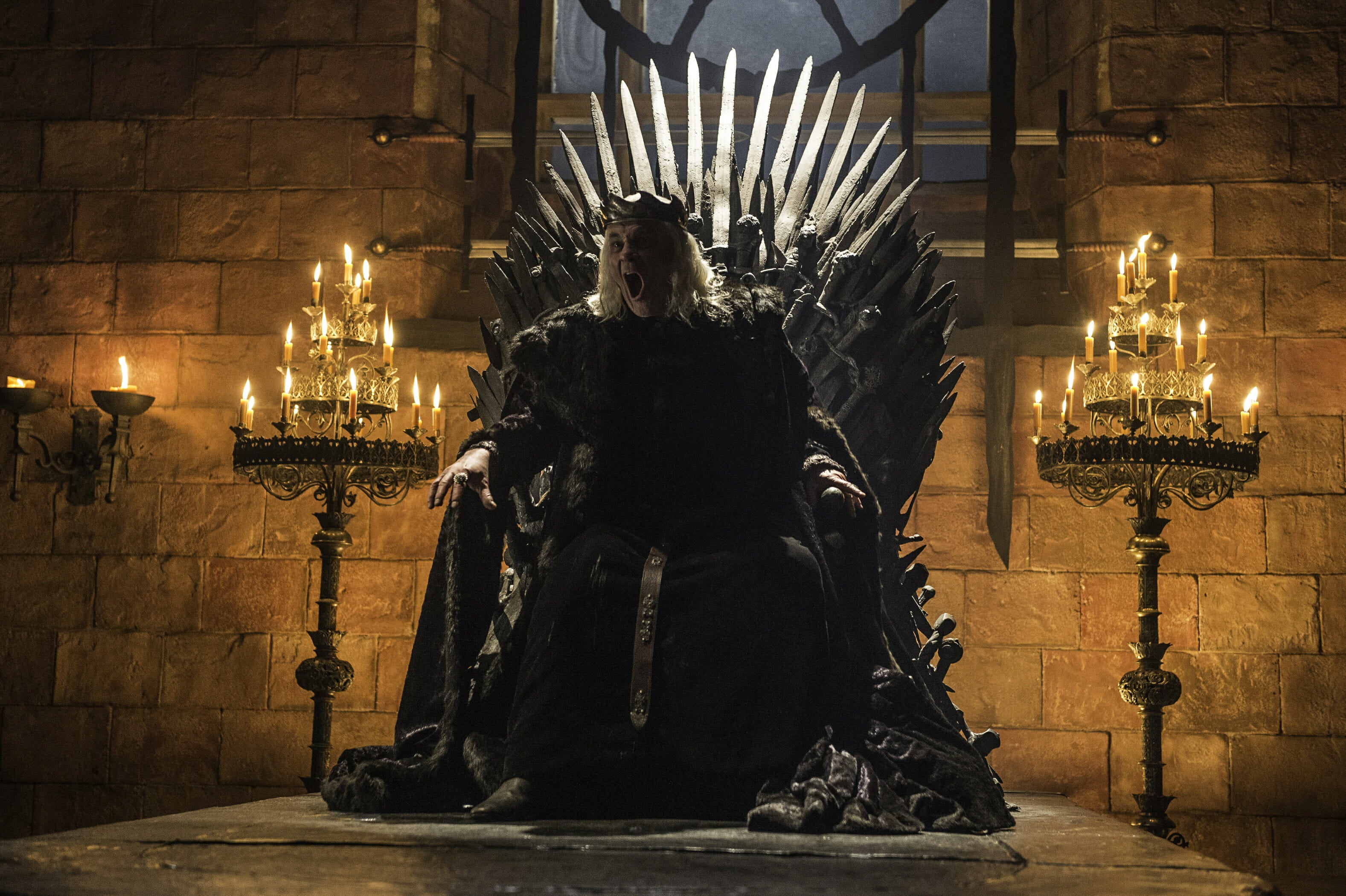
Granted, after everything that’s happened and with the army of the dead on Westeros’ doorstep, the norms of the Seven Kingdoms are probably being thrown out the window. But the only reason Daenerys was being entertained as a ruler by the great lords until now is because people thought she was the only Targaryen left.
On annulment in Westeros
Annulments on Game of Thrones are a rare thing, previously popping up only in the context of Sansa Stark and Tyrion Lannister’s marriage (a union that was never consummated). That annulment allowed Sansa to marry Ramsay Bolton, which was unfortunately an even worse match for her. But annulments and divorces outside of that context did occur, just not very often.
Gilly’s discovery of High Septon Maynard’s journal revealed that an annulment took place at the request of “Prince Ragger.”
“Maynard says here that he issued an annulment for a Prince ‘Ragger’ and married him to someone else at the same time in a secret ceremony in Dorne,” Gilly read.
Elia Martell is not mentioned—that’d be a name Sam would probably recognize. But as Martin revealed in 2000—in the context of Sansa and Tyrion’s marriage in A Storm of Swords—”no one needs to be present to annul a marriage” but one of the parties involved would have to request it. Until we know more, we’ll have to theorize whether Elia supported Rhaegar’s idea that he must have a third child (three heads of the dragon), or if he coldly abandoned her and their two young children.
According to Oberyn Martell back in season 4, it sounded much like the latter, although we don’t have the full story to say for certain.
“My sister loved him,” Oberyn Martell said of Elia. “She bore his children. Swaddled them, rocked them, fed them at her own breast. Elia wouldn’t let the wet nurse touch them. Then beautiful, noble Rhaegar Targaryen left her for another woman.”
The true heir to the Iron Throne
Now that we know Jon is a legitimate secret Targaryen, fans are now debating whether Rhaegar and Elia’s marriage being annulled would have nullified his first two children’s claims to the Iron Throne. It doesn’t matter much in the long run, considering that both Aegon and Rhaenys were murdered by the Mountain during the sacking of King’s Landing, but if they all survived Robert’s Rebellion, Rhaegar could’ve created another inheritance crisis over love (or prophecy).
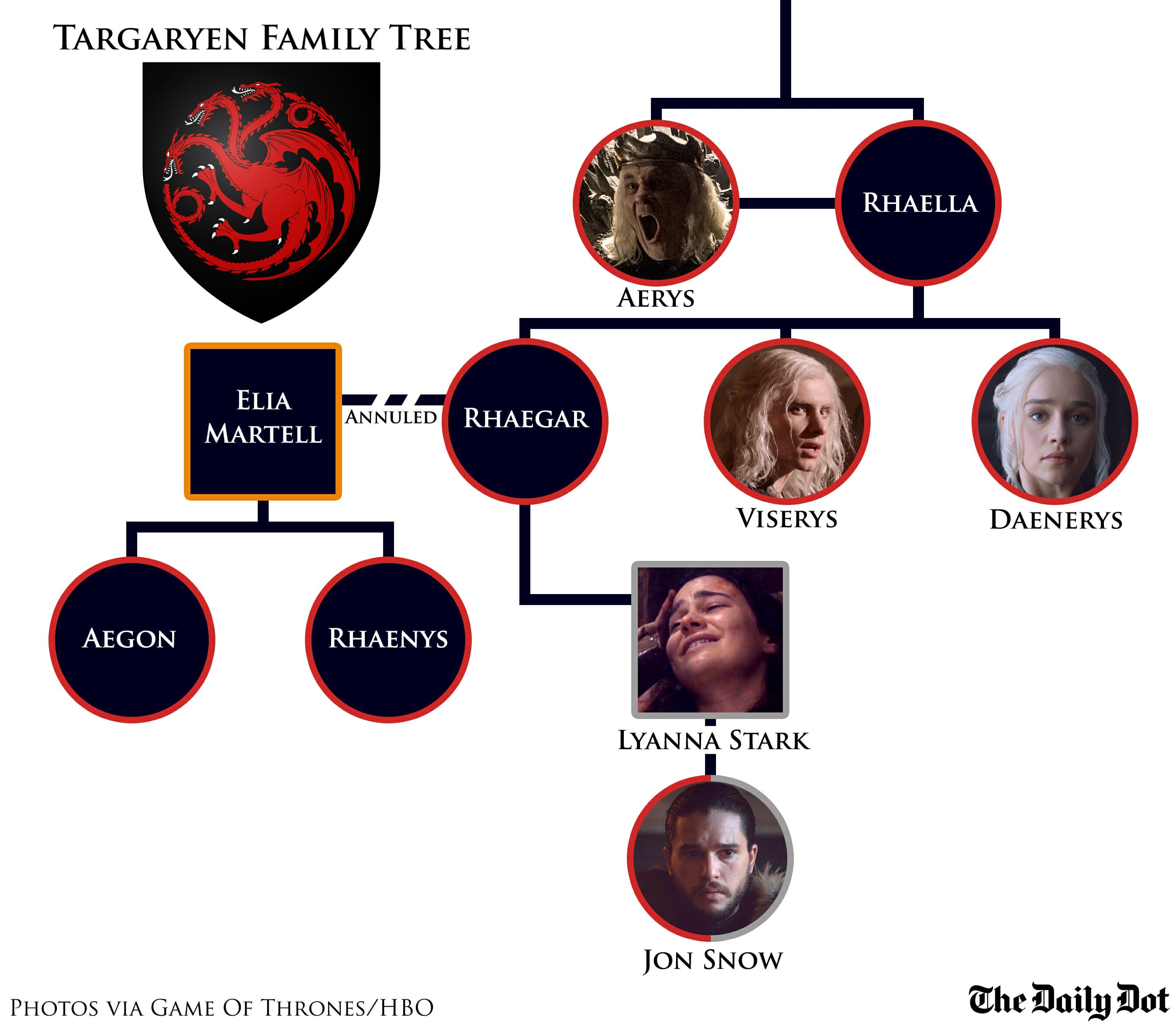
Now that there’s another Targaryen on the board, some lords might not want to back Daenerys. (Just look at Yara Greyjoy’s failure to win the Kingsmoot—though she was by far the best candidate—because men still don’t trust women rulers.) And unfortunately, Cersei’s reign might give them fodder to think they’re right. But none of that matters if you’re just tracking lineage, because Jon now has a better claim than Daenerys does.
Aerys II Targaryen was the last Targaryen king to sit on the Iron Throne. If he had died during a peaceful times, Rhaegar would have inherited the throne, eventually passing it to his son Aegon and so forth. Jon is Rhaegar’s only living son, so it’d go to him first before it would go to one of Rhaegar’s siblings. That means Daenerys is technically now second in line. (There is a way for them to solve this amicably, but we’ll have to wait to see how Jon feels about the whole incest thing first.) To further muddy the waters, The World of Ice and Fire stated that Aerys II named his son Viserys as his heir after Rhaegar’s death—not Rhaegar’s son Aegon—but it’s unclear if that would’ve been upheld. Looking at it from that standpoint puts Daenerys in a better position.
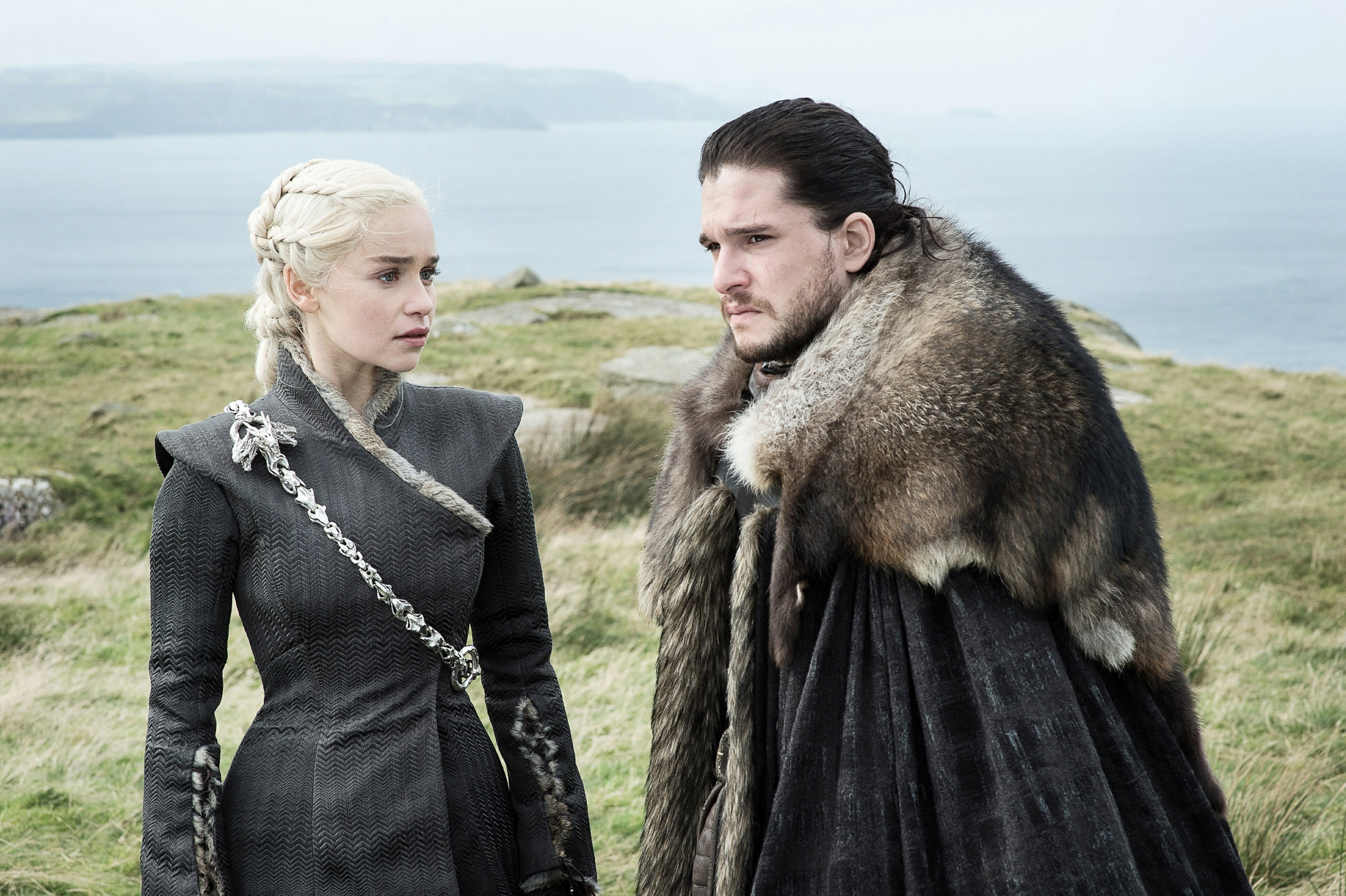
Jon told Sansa and the Northern lords earlier this season that he didn’t want to be King in the North when they thrust it upon him. And we don’t know that, if Jon survives the great wars to come, if Jon would accept the Iron Throne. He might not even want it, whereas Daenerys clearly does. But unless they band together, once Jon and the rest of Westeros finds out who he really is, he’ll always be a threat to Daenerys no matter how much he could potentially turn down the throne.

